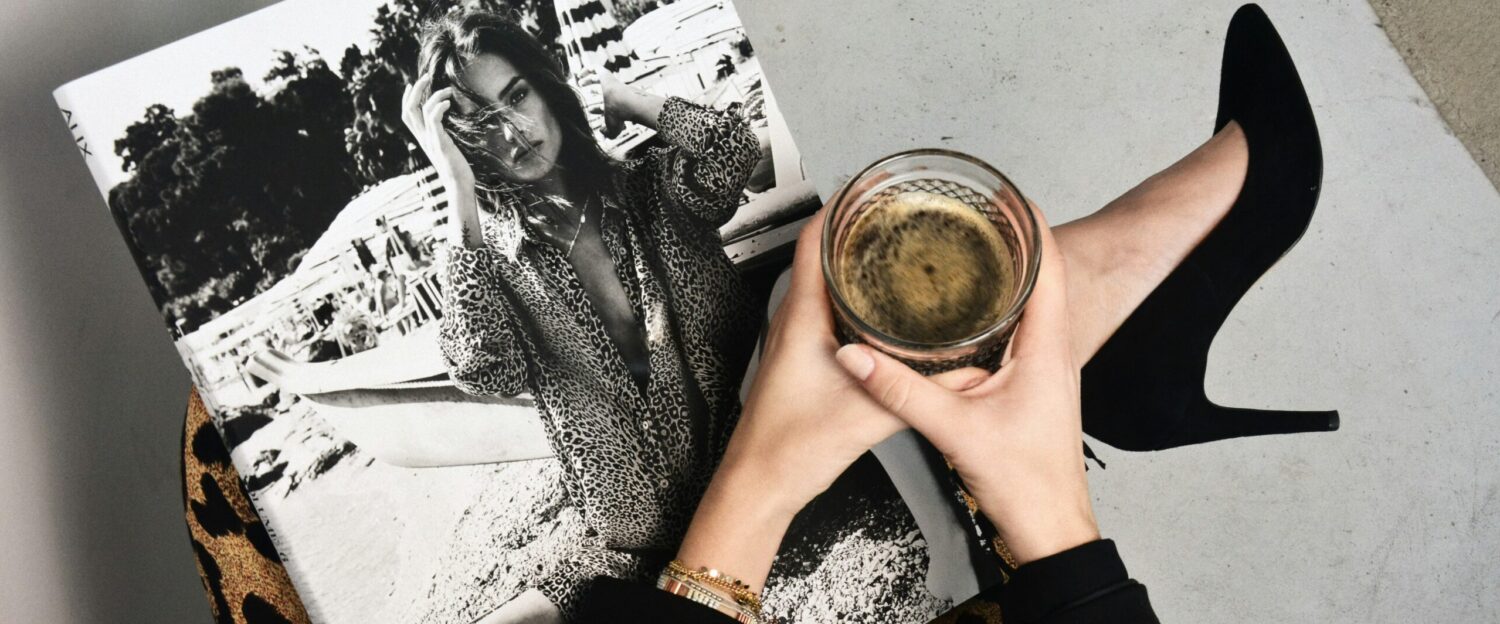Luxury fashion is entering a new era, one where sustainability isn’t an option, but a necessity. In 2025, the world’s most prestigious brands are reshaping high-end fashion by merging exquisite craftsmanship with groundbreaking sustainability.
From regenerative fabrics and lab-grown textiles to AI-driven couture and digital fashion, the future of luxury is both innovative and ethical. Today’s consumers aren’t just seeking exclusivity; they expect eco-conscious materials, responsible production, and a commitment to a greener future.
As sustainability becomes the ultimate status symbol, these are the top sustainable fashion trends of 2025 redefining luxury style.
1. Regenerative Fashion: Luxury That Restores the Planet
Sustainability is evolving beyond just minimizing harm. Leading fashion houses are embracing regenerative practices, ensuring their materials actively restore biodiversity, improve soil health, and absorb carbon emissions. This movement is making luxury fashion a force for environmental change rather than just a consumer-driven industry.
Case Study: Loro Piana’s Regenerative Wool
Italian luxury house Loro Piana is setting a new benchmark by committing to 100% regenerative wool sourcing by 2025. Through partnerships with biodiverse, carbon-sequestering farms, Loro Piana’s approach not only reduces the industry’s carbon footprint but also ensures exceptional fabric quality.
Similarly, Patagonia’s Regenerative Organic Certified™ cotton farms have demonstrated that regenerative agriculture can capture up to 40% more carbon than conventional farming methods. These initiatives prove that high fashion can play a direct role in climate restoration. (Source: Textile Exchange)
Luxury brands such as Bottega Veneta and Hermès are also experimenting with regenerative leather sourcing, ensuring that their leather goods actively contribute to ecological restoration.
Why It Matters
Luxury consumers are demanding more than high-quality craftsmanship, they want brands that actively participate in positive environmental impact. As regenerative materials become a new luxury standard, fashion houses that fail to adapt may find themselves irrelevant in a world shifting toward conscious consumption.
2. AI-Powered Customization & Circular Fashion
Overproduction has long been one of fashion’s greatest environmental challenges, contributing to 92 million tons of textile waste annually. Now, AI-powered customization and circular fashion initiatives are allowing brands to produce only what’s needed, reducing excess inventory while enhancing exclusivity.
Case Study: Gucci’s AI-Driven Couture
Gucci is revolutionizing haute couture with its AI-powered made-to-order service. Customers can now digitally design garments tailored to their preferences, ensuring that every piece produced has a confirmed buyer. This eliminates waste while elevating personalization, reinforcing the brand’s luxury appeal through exclusivity.
Meanwhile, H&M’s Rewear platform is leveraging AI to track resale value, encouraging customers to resell pre-loved garments for store credit. This initiative not only keeps clothing in circulation but also introduces a circular economy model to mainstream retail. (Source: McKinsey & Company)
Luxury brands such as Burberry and Prada are also implementing AI-driven production to predict demand and minimize overproduction, ensuring that every piece is intentional and not wasted.
Why It Matters
AI-driven fashion minimizes waste, increases exclusivity, and aligns with the luxury consumer’s desire for uniqueness, sustainability, and technology-driven design.
3. Biofabricated Textiles: The Future of Luxury Materials
High-end brands are investing in bioengineered textiles, replacing traditional leather, silk, and synthetic fabrics with sustainable lab-grown alternatives. These innovations create materials free from animal cruelty and petroleum-based production, reducing fashion’s overall carbon footprint.
Case Study: Stella McCartney & Mylo™ Leather
A pioneer in sustainable innovation, Stella McCartney has incorporated Mylo™, a mushroom-based leather alternative, into her collections. Developed by Bolt Threads, Mylo™ mimics the texture and durability of traditional leather without the environmental impact of tanning or livestock farming.
Similarly, Hermès has partnered with MycoWorks to create Sylvania, a lab-grown alternative to traditional leather. By maintaining its commitment to heritage craftsmanship while embracing new technology, Hermès is proving that sustainability and luxury craftsmanship can coexist. (Source: Bolt Threads)
Why It Matters
Biofabrication provides a cruelty-free, carbon-neutral solution that preserves the high-quality textures and longevityexpected in luxury materials.
4. The Rise of Digital Fashion & NFT Wearables
Luxury fashion is no longer limited to the physical world. The rise of digital couture, NFT wearables, and virtual try-ons is redefining exclusivity, creativity, and sustainability. By eliminating physical waste, digital fashion offers a zero-carbon alternative for high-end consumers.
Case Study: Balenciaga & The Metaverse
Balenciaga has been at the forefront of digital fashion, launching NFT collections that are as exclusive as their physical counterparts. Their collaborations with platforms like DressX and The Fabricant allow consumers to buy wearable digital couture that can be showcased in social media, gaming, and metaverse spaces. (Source: DressX)
Luxury brands such as Dolce & Gabbana and Gucci are also offering limited-edition NFT wearables, providing digital ownership while reducing fashion’s reliance on physical production.
Why It Matters
Digital fashion aligns with luxury’s need for innovation, creating waste-free, hyper-exclusive designs that resonate with younger, tech-savvy consumers.
5. Hyper-Local Luxury & On-Demand Manufacturing
The movement toward localized production and made-to-order fashion is gaining momentum. By reducing reliance on mass production and overseas manufacturing, brands are preserving craftsmanship, supporting ethical labor practices, and cutting emissions from global shipping.
Case Study: Chanel’s Artisanal Approach
Chanel continues to prioritize craftsmanship over mass production, investing in regional ateliers that ensure its couture remains exclusively handcrafted. Meanwhile, Unspun’s 3D-weaving technology is creating custom-fit denim without excess inventory or textile waste.
Why It Matters
Luxury fashion is shifting back toward heritage craftsmanship, proving that high-end clothing can be both sustainable and deeply artisanal.
Final Thoughts: The Future of Sustainable Fashion in 2025
Luxury fashion in 2025 is defined by innovation, exclusivity, and responsibility. The brands leading sustainable fashion trends this year are those that:
- Invest in regenerative materials that heal the planet.
- Use AI-powered production to eliminate overproduction and enhance exclusivity.
- Develop biofabricated textiles to replace unsustainable materials.
- Embrace digital couture for waste-free, status-driven fashion.
- Return to artisanal craftsmanship through hyper-local, on-demand manufacturing.
Sustainability isn’t just the future, it’s the now! 🌿✨
Join the Future of Sustainable Luxury with Elevate Everyday
At Elevate Everyday, we curate the latest in sustainable luxury, conscious design, and future-forward fashion.
🌱 Stay ahead of the trends with insights on regenerative textiles, AI-driven fashion, and digital couture.
✨ Discover the world’s most innovative brands redefining sustainability in high-end fashion.
💌 Be the first to access exclusive reports, shopping guides, and VIP content.
👉 Subscribe now and elevate your style—ethically, effortlessly, and every day. 💚✨


